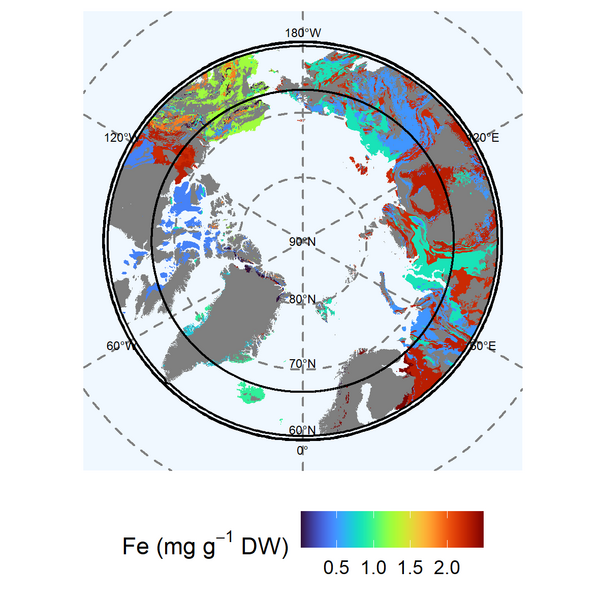aRctic: Generating elemental maps of the Arctic using the R Markdown function
O 2.3 in Morning Session
13.10.2022, 12:00-12:15, H 36
Arctic soils store large amounts of organic carbon and other elements such as amorphous silica, silicon,
calcium, iron, aluminium, and phosphorous. Global warming is projected to be most pronounced in the Arctic leading
to thawing permafrost, which in turn is changing the soil element availability. To project how biogeochemical cycling
in Arctic ecosystems will be affected by climate change, there is a need for data on element availability.
In this study, we present Pan-Arctic maps of concentrations amorphous silica (ASi), silicon (Si), calcium (Ca), iron (Fe), phosphorus (P), and aluminium (Al) availability.
of the top 100 cm of Arctic soil. Furthermore, we provide values for element availability for the organic and the mineral layer of the seasonally thawing active layer as well as for the
uppermost permafrost layer. For this we analyzed 574 soil samples from the circumpolar Arctic region and used the "Markdown" function from R to generate maps,
based on the Geological Map of the Arctic. We show large differences in ASi, Si, Ca, Fe, P, and Al
availability among different lithologies and Arctic regions.
Our spatially explicit data on differences in the availability of elements between the
different lithological classes and regions now and in the future will improve Arctic Earth system models for estimating
current and future carbon and nutrient feedbacks under climate change
Keywords: Arctic permafrost, element availability, silicon, climate change
Export as iCal:



